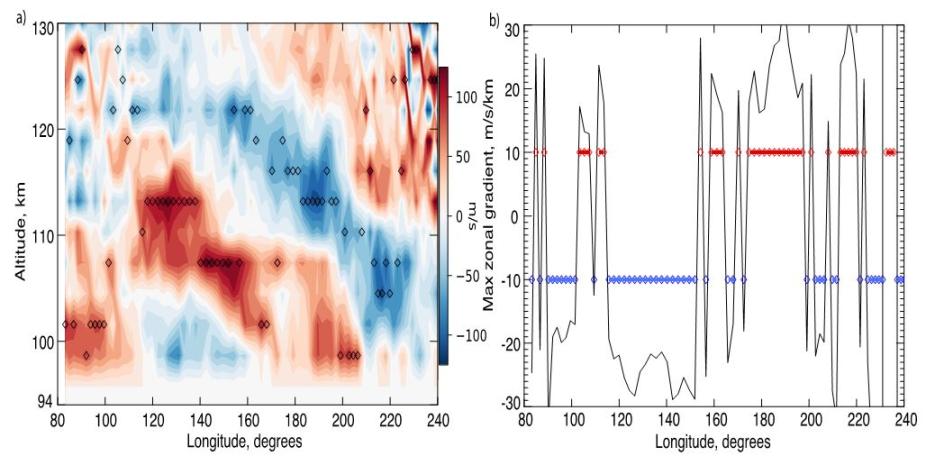Geophysical Research Letters—S. L. England, C. R. Englert, B. J. Harding, C. C. Triplett, K. Marr, J.M. Harlander, G.R. Swenson, A. Maute, T. Immel

Example of maximum shear determination in zonal wind from 1 orbit of MIGHTI observations a. daytime zonal wind b. magnitude of maximum wind shear.
The neutral wind in the mesosphere-lower thermosphere region around 90 to 120 km is highly variable. In this region large vertical shears in the horizontal winds have been observed for example by rocket experiments or by lidars. However, these observations are of short duration or spatially fixed. In this study observations from the MIGHTI instrument on board the Ionospheric Connection Explorer are analyzed to determine the maximum wind shear in the 95-120 km region during the day time. The strong shear occurrence, horizontal scale and underlying organization is examined. No preferred wind shear direction is found. The shears that persist for a short horizontal extent are slightly larger in amplitude and more numerous than those that persist across large horizontal scales. The altitude at which the strongest shears occur often shows a downward progression with local time, following the climatological winds.
England, S. L., Englert, C. R., Harding, B. J., Triplett, C. C., Marr, K., Harlander, J. M., et al. (2022). Vertical shears of horizontal winds in the lower thermosphere observed by ICON. Geophysical Research Letters, 49, e2022GL098337. https://doi.